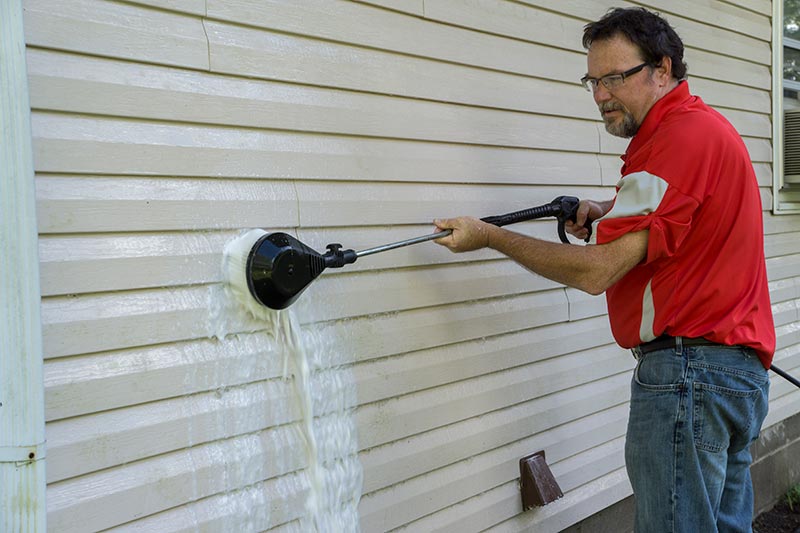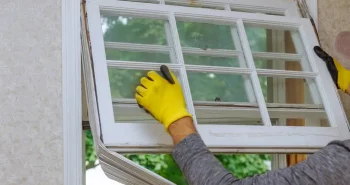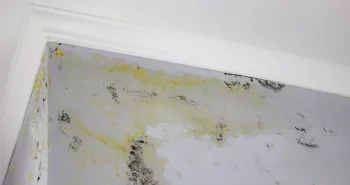Your home’s siding has a big job. It helps to maintain a comfortable living environment and works hard to keep the elements outside. Over time, howling winds, debris, winter snow, heavy rain, and scorching sun takes a toll. Luckily, siding is extremely durable. However, if you want your home to look its best, you’re eventually going to need to clean your siding. While most siding is made to be low maintenance, years of exposure will eventually require some attention. To help make sure you’re maximizing your curb appeal, here’s how to clean your siding, whether it’s vinyl, cedar, wood, metal, or fiber cement.
Common Issues that Require Cleaning
When shopping for new home siding, one thing that many homeowners take into account is the general maintenance requirements. This includes cleaning. Since siding covers a large surface area of your home, constant cleaning can be burdensome and time consuming. While it’s unlikely that you’ll need to add siding cleaning to your monthly to-do list, there are some issues that will require attention if you want to maintain your home’s appeal.
Mold and Mildew
Mold and mildew can accumulate for a number of reasons. Homes in areas with high humidity, lots of rainfall, and long winters with ongoing cycles of melting snow can create breeding grounds for mold and mildew. To make sure that this growth doesn’t spread, it’s important to clean the affected area when you notice it.
Stains
Certain siding materials are more susceptible to stains and the longer they sit, the harder they will be to remove. If you notice any reddish-brown stains, you’re dealing with rust. Black or green stains can be an indication of mold or algae. Water stains are a result of ineffective drainage systems and yellow stains can be a sign that your insulation is deteriorating.
Debris or Dirt
During particularly heavy storms or rainfall, debris or dirt can be carried through the air and lodged within cracks or gaps in your home’s siding. Cleaning any debris or dirt is important to avoiding accumulation that can lead to streaks or stains.
Chalk Residue
If your siding is painted, you may eventually notice chalk residue accumulating in some areas. This is due to an oxidizing chemical reaction with UV light from the sun. Cleaning chalk residue early can avoid stains and instances where you need to repaint the siding.
Exposure
Additionally, years of prolonged exposure to the natural elements will eventually require some sort of cleaning. If you haven’t cleaned your siding in a while, consider adding it to your spring-cleaning agenda and see how the aesthetics change. To keep it looking its best, we recommend that you clean your home’s siding every year or two.
The Best Ways to Clean Your Siding
How you clean your siding is going to depend on the type of siding you have. While there may be some similarities in the process, cleaning vinyl siding is going to require a different approach than cleaning fiber cement siding. Here are the best ways to clean your siding, whether it’s vinyl, cedar, wood, metal, or fiber cement.
Cleaning Vinyl Siding
Cleaning vinyl siding is fairly easy and straightforward, as the material itself is durable and can withstand the use of a pressure washer. However, to make sure that you’re caring for your vinyl siding and providing the best opportunities for longevity, it’s recommended that you clean it using a soft cloth or soft-bristle brush. Avoid metal brushes as they can cause damage. To reduce streaking, start at the bottom of your house and work your way up, thoroughly rinsing as you go.
If your vinyl siding isn’t too dirty, you may be able to use a simple mixture of water and vinegar. If you have more serious stains, it will be better to use something stronger. There are a few different options for cleaning solutions. Just make sure that if you have landscaping nearby, you’re using something environmentally friendly like Simple Green. You can also use an oxygen-bleach mixture. If you’re not concerned about landscaping, many household cleaners can be utilized to banish tough stains.
For those that do not want to scrub the entirety of their home’s vinyl siding, you can try using a power washer. This can help you easily eliminate dirt and debris without having to meticulously cover each inch of your home with a scrubber or cloth. If you take this route, make sure that you reduce the pressure to avoid damaging the vinyl. It may also be worthwhile to speak to the manufacturer of your siding about whether or not a power washer will cause damage. Taking the time to do this could save you thousands of dollars in repairs.
Cedar Siding Cleaning Tips
Cedar siding is a little more sensitive than vinyl siding. It offers an unbeatable aesthetic value but is more susceptible to mold and mildew growth. Over time, cedar can become weathered more quickly than other types of siding. If you want to maintain your cedar siding, it’s important to spot clean as you see problems and thoroughly clean the entirety of your home at least once every five to seven years.
The best way to clean cedar siding is to use a solution that’s made of three parts water and one part bleach. Apply the solution with a sprayer and let it sit for about 15 minutes. Next, simply rinse the solution off with a garden hose. Try to avoid pointing the hose upwards as this could cause water to get trapped behind the cedar siding, leading to mold and mildew problems. If there are certain areas saturated with tough stains, scrub them using a nylon bristle brush.
Do not use a power washer when cleaning cedar siding. Power washers can force water into places that could result in rotting. The pressure itself can also remove shingles and reduce the overall lifespan of your siding.
How to Clean Wood Siding
Other wood siding cleaning methods are similar to cedar siding cleaning. You want to avoid using a power washer to reduce the chances of damaging your wood siding. You can get the same benefits from cleaning wood siding with an oxygen-bleach mixture, which is non-toxic to landscaping and environmentally friendly. Depending on the type of wood siding you have, you may benefit from using a sealant after cleaning. Talk to a professional siding company to learn more about this option.
Metal Siding Cleaning Best Practices
Metal siding is extremely durable and is fairly easy to clean. However, as with all home siding cleaning best practices, you want to avoid doing anything that could damage the siding or the paint.
The first step is to scrub away any visible signs of dirt or debris. Using a scrub brush made of soft material, go around your home and give special attention to areas that look overly saturated with dirt, mold, mildew, grime, or stains. Avoid using excess pressure that could scratch the paint on your metal siding. After preliminary scrubbing, you’ll then want to prepare the cleaning solution and apply it to your home’s metal siding. There are multiple options for cleaning solutions and many homeowners find that a mixture of laundry detergent with water works well. Apply the solution using a hose or on the lightest setting of a pressure washer. Allow it to sit for a few minutes and then thoroughly rinse your siding with water. If you leave any of the solution on your metal siding, it can lead to corrosion or damages. After rinsing, simply let it dry and enjoy.
Fiber Cement Cleaning
As fiber cement siding continues to grow in popularity, it’s becoming more important to understand how to maintain and clean it. To prolong the life of your fiber cement siding, it’s recommended to spot clean as you notice any signs of dirt, debris, mold, or other stains. Small areas of dirt and chalk residue can be cleaned using water alone. If you have tougher stains or oil-based contaminants, use a mixture of water and dishwashing soap. Harsh cleaning chemicals can cause damage and erosion, so using a simple product is the best approach. Clean the fiber cement siding using a cloth, brush, and a garden hose to avoid damages. If you have mold and mildew stains, opt for products targeted at eradication such as Jomax or Armor. Always follow the manufacturer’s instructions for specific cleaning tips.
If you’re looking to get new siding installed, or need more information on professional siding cleaning, contact the professionals at First Star Exteriors today. At First Star Exteriors, we believe there’s a perfect balance between hands-on, personable treatment, quality of work, and speed of delivery. We take the time to understand your needs and communicate effectively from the first quote to the last nail being placed. To learn more about our siding options or to get a quote from us today within 48 hours, contact us at (479) 267-4800 or fill out our contact form here.





